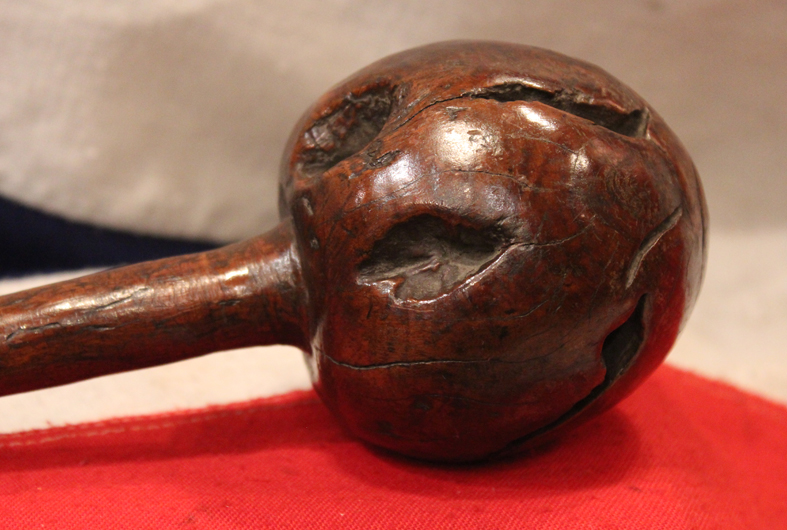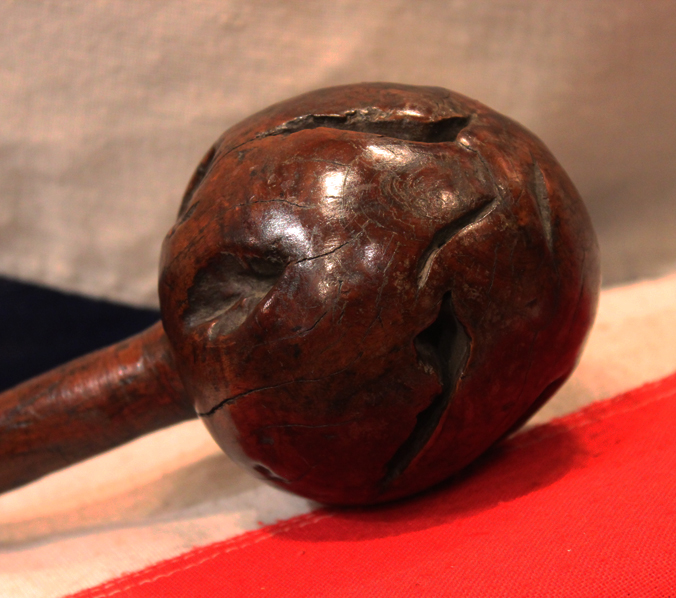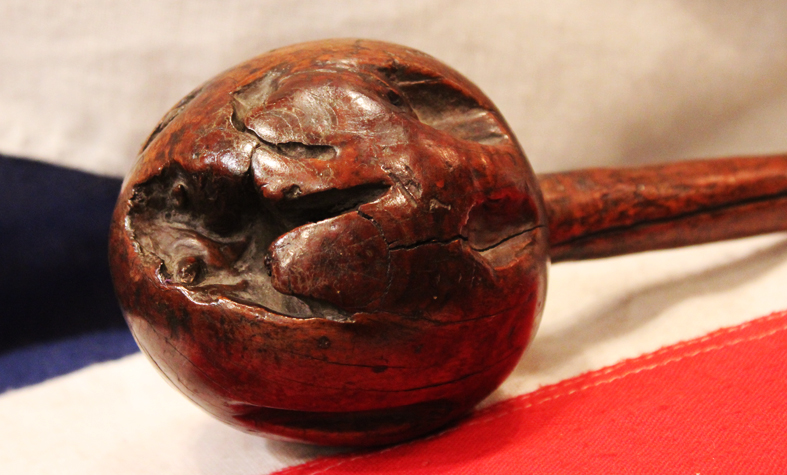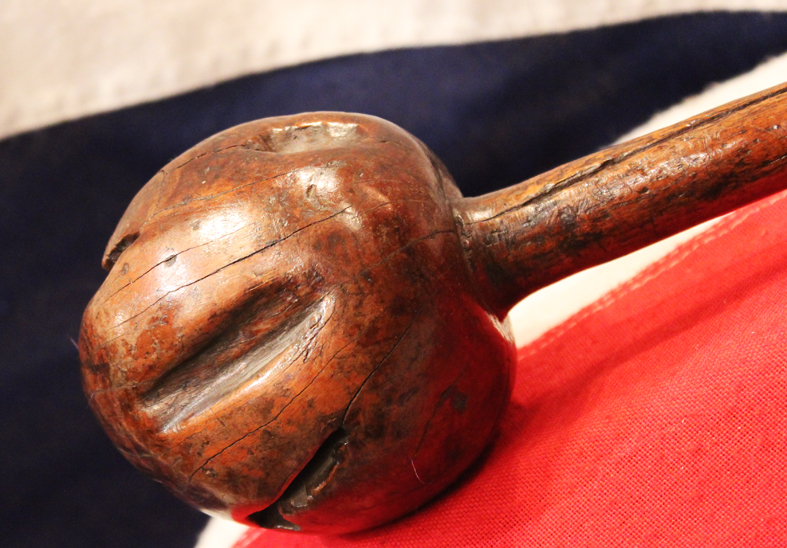A Most Fine & Beautiful, Rare 18th Century Antique, Fijian Ula Drisia South Seas Island Warrior’s Throwing Club. From the Captain Cook Period Showing Excellent Natural Age Patination
Captain James Cook sighted Fiji during his second voyage in 1774, specifically sighting the island of Vatoa. However, he did not land on or explore any other Fijian islands during that voyage. While Cook's sighting is noted, some travel sites say he's credited with combining the Tongan name "Fisi" and the Fijian name "Viti" to arrive at the name "Fiji".
Superbly patinated root ball with geometrically carved handle. The ula was the most personal weapon of the Fijian warrior and was inserted into a man's fibre girdle sometimes in pairs like pistols. The throwing of the ula was achieved with great skill, precision and speed. It was often carried in conjunction with a heavier full length club or spear which served to finish an opponent after initially being disabled by a blow from the ula. Was made by a specialist from a variety of uprooted bushes or shrubs. Across 1,000 kilometres (620 miles) from east to west, Fiji has been a nation of many languages. Fiji's history was one of settlement but also of mobility. Over the centuries, a unique Fijian culture developed. Constant warfare and cannibalism between warring tribes were quite rampant and very much part of everyday life. During the 19th century, Ratu Udre Udre is said to have consumed 872 people and to have made a pile of stones to record his achievement."Ceremonial occasions saw freshly killed corpses piled up for eating. 'Eat me!' was a proper ritual greeting from a commoner to a chief. The posts that supported the chief's house or the priest's temple would have sacrificed bodies buried underneath them, with the rationale that the spirit of the ritually sacrificed person would invoke the gods to help support the structure, and "men were sacrificed whenever posts had to be renewed" . Also, when a new boat, or drua, was launched, if it was not hauled over men as rollers, crushing them to death, "it would not be expected to float long" . Fijians today regard those times as "na gauna ni tevoro" (time of the devil). The ferocity of the cannibal lifestyle deterred European sailors from going near Fijian waters, giving Fiji the name Cannibal Isles; as a result, Fiji remained unknown to the rest of the world. The handle has a natural age split at the base.
Code: 20896
1650.00 GBP








